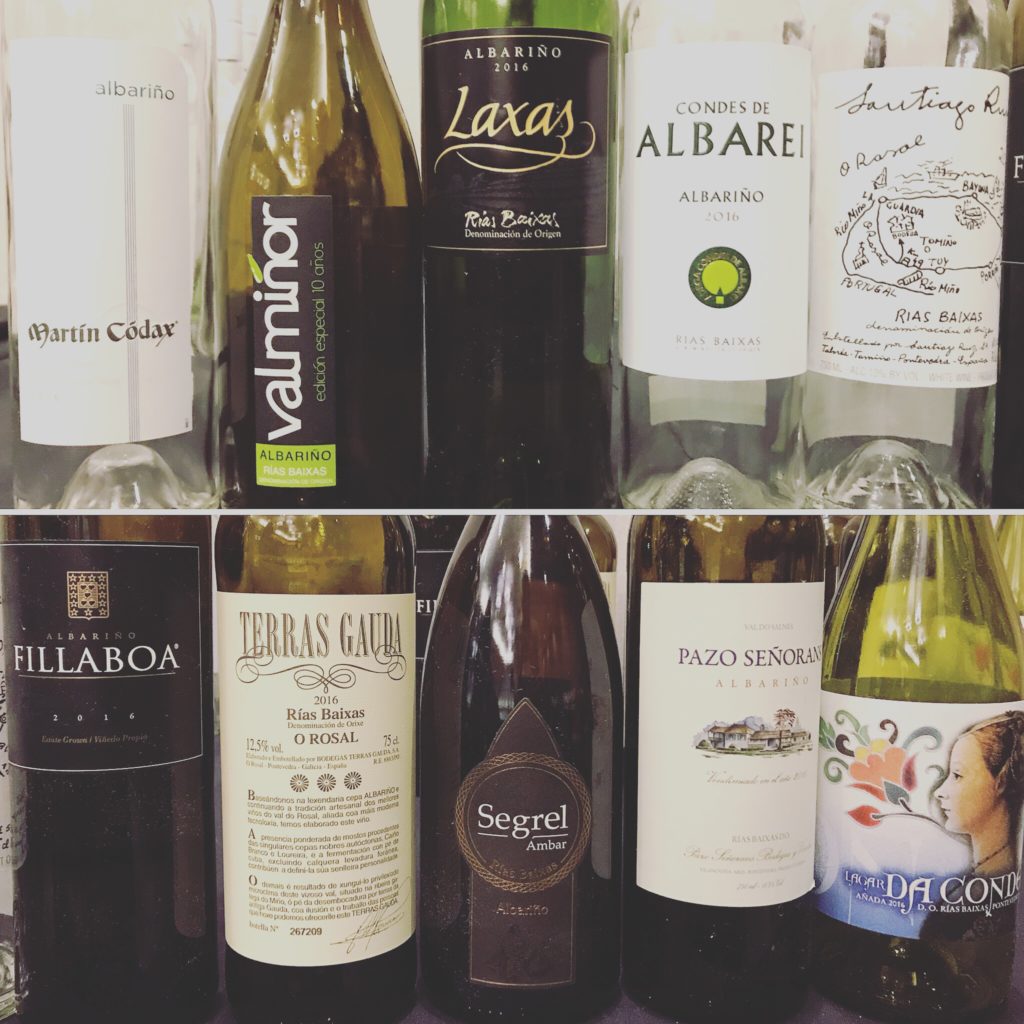The new season of RuPaul’s Drag Race All Stars 3 means that me and my friend from Barcelona are starting up our weekly podcast again, y’all. He’s originally from Northwest Spain, so when I’m drunk and drinking Rías Baixas – made from the Albariño grape – I always send him a message that I’m drinking juice from his birthplace, even though I sense his mild exasperation when he reminds me he’s not exactly from the region the grape is grown.
My excitement for this Wine Bloggers Conference seminar very much stems from the fact that my access to any extensive selections on these wines was cork-blocked back in Canada, where vintages were not fresh, options were few, and prices were inflated. The grape is easily soaring to the top of my list of favourite white grapes, though. If there’s another reason to love a grape that embodies a balance between lively salinity and a peaches-and-cream flavour profile, over half of the winemakers in Spain’s Rías Baixas are women. I’m so so so into that.
I accidentally made too many New Year’s resolutions, y’guys. I’m attending a wedding in Spain during the summer, and I also hope to take the new Spanish Wine Scholar course in the fall. Kiiiinda excited! This year’s theme for the Vancouver International Wine Festival is Spain and Portugal, but unfortunately I’m not going this time around. Maybe this is the year of Spanish wine.

Martín Códax 2016 Rías Baixas (Rías Baixas, Galicia, Spain) Nov 2017. $16 SRP USD.
Steely peach and nectarine with a hint of waxy minerality. Creamy with a hint of salinity at the end. Not as individualistic as the later wines in the flight, but this was dependable and well-made.
Valmiñor 2016 Rías Baixas (Rías Baixas, Galicia, Spain) Nov 2017. $14 SRP USD.
More power. Juicy, ripe, vivid, and heady with sweet perfume: very Viognier-adjacent. Ripe pear as well. Slightly fuller with teasing acidity and a slightly saline ending to match its creaminess. Interesting and really keeps you on your toes.
Bodegas As Laxas 2016 Rías Baixas (Rías Baixas, Galicia, Spain) Nov 2017. $18 SRP USD.
Has a heady minerality and undertone of earthiness to it which balances out the stone fruit and red apple. Minerality takes the force on this one, but there’s a hint of fruity charm on the palate.
Condes de Albarei 2016 Rías Baixas (Rías Baixas, Galicia, Spain) Nov 2017. $15 SRP USD.
The most aromatic so far with honeysuckle, ripe peach, and almost something like an apricot jam. Similar flavours on the palate, but the refreshing minerality still reigns supreme.
Santiago Ruiz 2016 Rías Baixas (Rías Baixas, Galicia, Spain) Nov 2017. $20 SRP USD.
Woah! Has a distinct accent of red fruit – something like wild strawberries or rainier cherries. The minerality is also strong on this one, but there’s a tea flavour that joins the stoniness on the palate.
Fillaboa 2016 Rías Baixas (Rías Baixas, Galicia, Spain) Nov 2017. $20 SRP USD.
Slightly silent on the nose with more wool and apple skin. More textured than flavoured – but there’s a chewy and savoury peach kernel character on the palate. Orange pekoe tea.
Terras Gauda 2016 Rías Baixas, O Rosal (Rías Baixas, Galicia, Spain) Nov 2017. $20 SRP USD.
Ripe peach, flowers, and almost a hint of vanilla: one of the ripest expressions in the flight so far. Somehow refreshing yet hedonistic, ending with hints of herbs on both the nose and the palate. Tea and cream. Attitude.
Pablo Padín 2015 “Segrel Ambar” Rías Baixas (Rías Baixas, Galicia, Spain) Nov 2017. $20 SRP USD.
An interestingly jagged nose: maybe reminiscent of something like cranberry? A hint of something maybe green. A minerality reminiscent of the Fillaboa. Glossy and finessed.
Pazo de Señorans 2016 Rías Baixas (Rías Baixas, Galicia, Spain) Nov 2017. $15 SRP USD.
The key word here is purity, with a combination of peaches and cream that brings me, in my mind, closest to the archetype of Rías Baixas. Supremely charming and finessed. Savoury ending.
Lagar de Condesa 2016 Rías Baixas (Rías Baixas, Galicia, Spain) Nov 2017. $18 SRP USD.
Has a distinct bruised apple and honeyed outline. Hints of almonds. This is almost, dare I say: Burgundian, with the French oak showing distinctly through the teasing play of ripeness and acidity on the palate. Hint of dried orange peel.